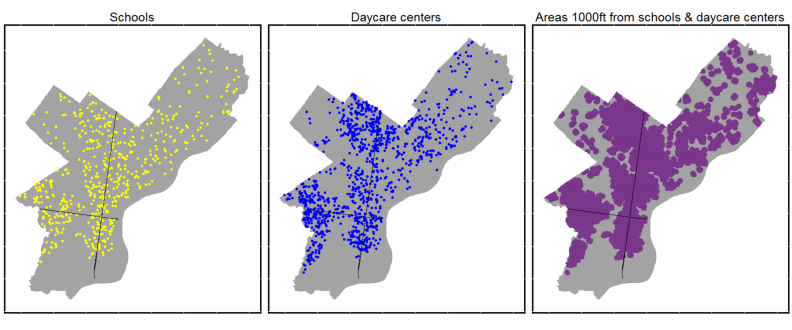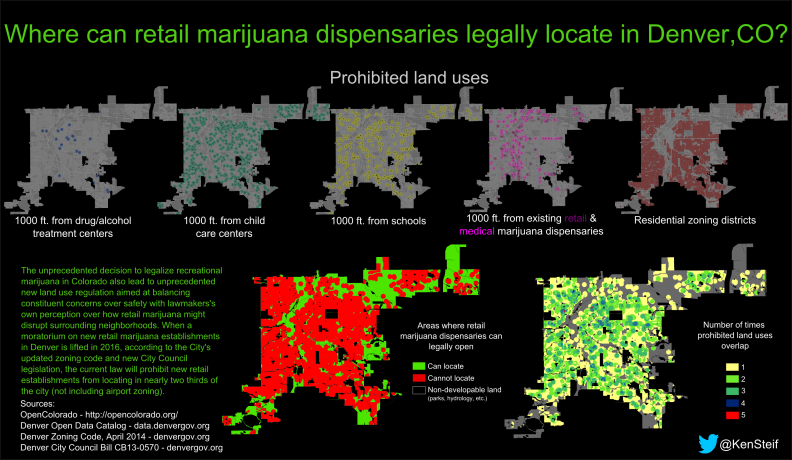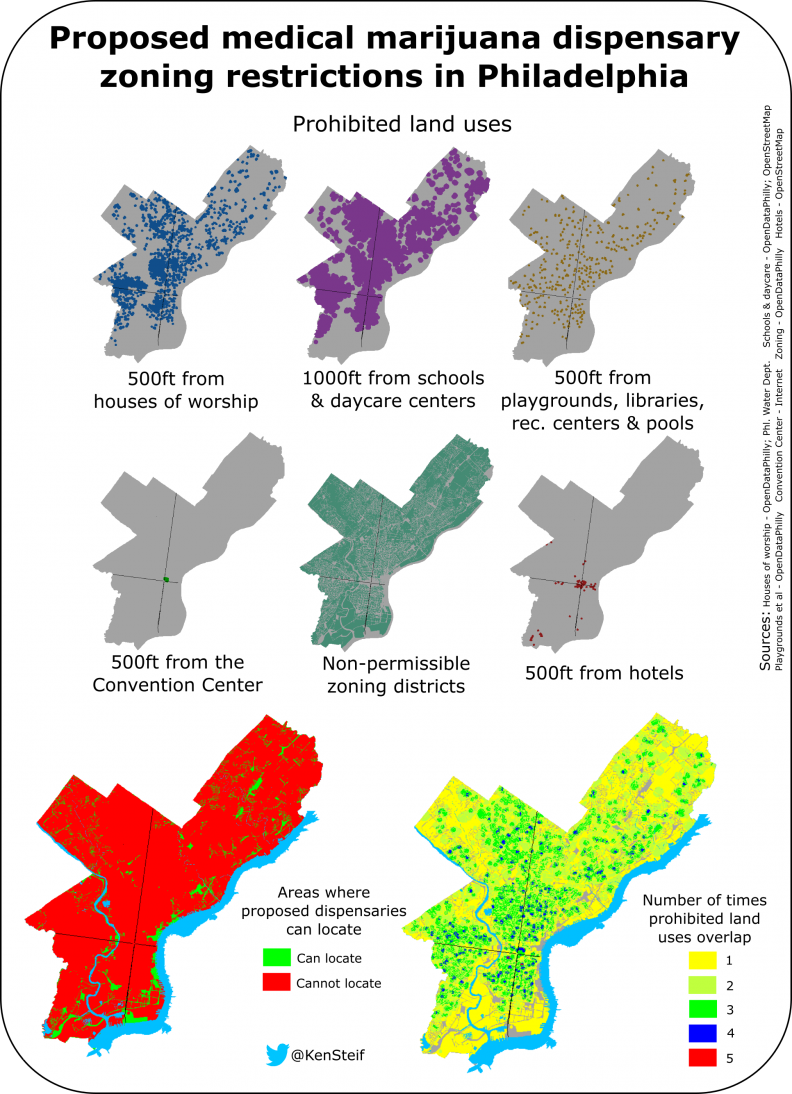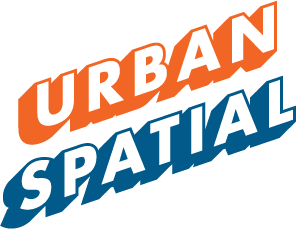In April of 2016, the State of Pennsylvania voted to legalize medical marijuana. Currently, Philadelphia City Council members are debating how to use the City’s zoning code to limit where these new land uses can locate.
According to Philadelphia Inquirer, the State legislation already prohibits medical marijuana dispensaries from locating within 1,000 feet of schools or day care centers. Figure 1 shows the locations of schools and daycare centers in Philadelphia, and those areas within a 1000ft that would be prohibited due to state restrictions.

Figure 1: Schools, daycare centers and prohibited areas that surround them
Is it reasonable for politicians to put zoning restrictions on medical marijuana? Absolutely – and not because they think that marijuana is bad or that it will corrupt our children. The reason is that there is little evidence (here is a recent contribution – PDF) on the effect that marijuana-related land uses have on surrounding neighborhoods. As such, politicians across the nation are responding to the real and perceived concerns of their constituents.
It’s not often that an entirely new land use pops up in our cities. It could be that marijuana-related land uses corrupt passers-by. Perhaps they generate crime or scare off would-be home buyers.
Or, it could be that people actually value these land uses. That having them in their neighborhood is as valuable as having a drug store. In the case of recreational dispensaries, like those in Colorado or Washington, perhaps people stop off for some pot and then purchase something from the coffee shop or bookstore nearby.
Given the lack of evidence, we should not be surprised if our elected officials err on the side of over-regulation. In fact, when Denver’s recreational zoning legislation came out, it too seemed a bit burdensome, so I created the below data viz.

Figure 2: Recreation marijuana zoning regulation in Denver, CO
I soon found out that there were entire start-ups aimed at helping businesses navigate the land use hurdles in pot-legal states. So what does this zoning map look like for Philly?
The Inquirer reports that, “the legislation, introduced by Derek S. Green, would ban dispensaries within 500 feet of residential areas, churches, hotels, convention centers, playgrounds, pools, parks, recreation centers, libraries, and other places. State law already bans dispensaries within 1,000 feet of schools or day-care centers.”
Figure 3 shows areas where medical dispensaries would be off-limits according to state and proposed local land use restrictions.

Figure 3: Proposed medical marijuana zoning regulation in Philadelphia, PA (click here for a smaller version)
Zoning district data was gathered from this October 20th dated Council bill. Using OpenDataPhilly and other free sources, most but not all of the other land uses specified in the Inquirer article were gathered. The red and green map shows that under the proposed zoning guidelines, much of the City would be off-limits. The map to its right shows how many times the prohibited land uses overlap.
Surely, the bill will change between now and its enactment.
Wouldn’t it be interesting however, if it turns out that neighbors value these establishments? What if on top of the direct benefits to patients and state tax coffers, marijuana reform laws actually brought increased vibrancy to to urban commercial corridors?
Ken Steif, PhD is the founder of Urban Spatial. He is also the Director of the Master of Urban Spatial Analytics program at the University of Pennsylvania. You can follow him on Twitter @KenSteif
